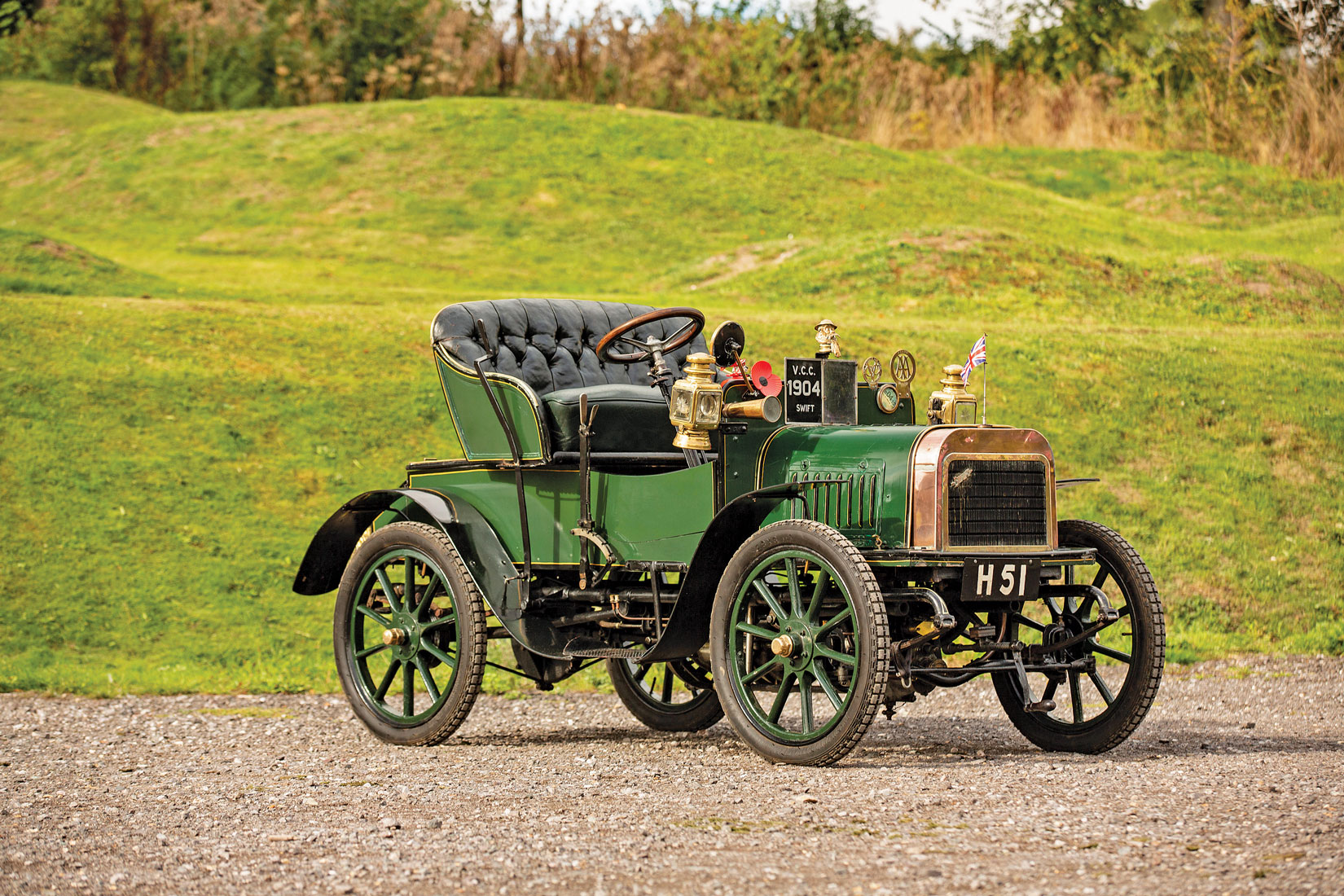This early single-cylinder Swift was purchased by the vendor’s grandfather in 1931 from a farmer in Eversley, Berkshire. Since then, the car has completed no fewer than 57 London to Brighton Runs plus numerous other events and rallies. It has only failed to finish on four occasions, and in 1968 successfully completed the Run despite having tailgated another vehicle following a brake failure. (The Swift was professionally repaired.)
Earlier this year the car successfully completed the Ellis Journey, celebrating the first recorded motorized carriage journey in the U.K.
H51 comes with various trophies, pendants, badges and other memorabilia accumulated over the last 90 years together with a Veteran Car Club dating certificate and three journals dating from the present day back to the 1930s, including photographs. Also included in the sale are a maintenance manual; spare trembler assembly; spare inlet valve and housing; spare exhaust valve, spring, cotter and retainer; and numerous other parts and spanners.

